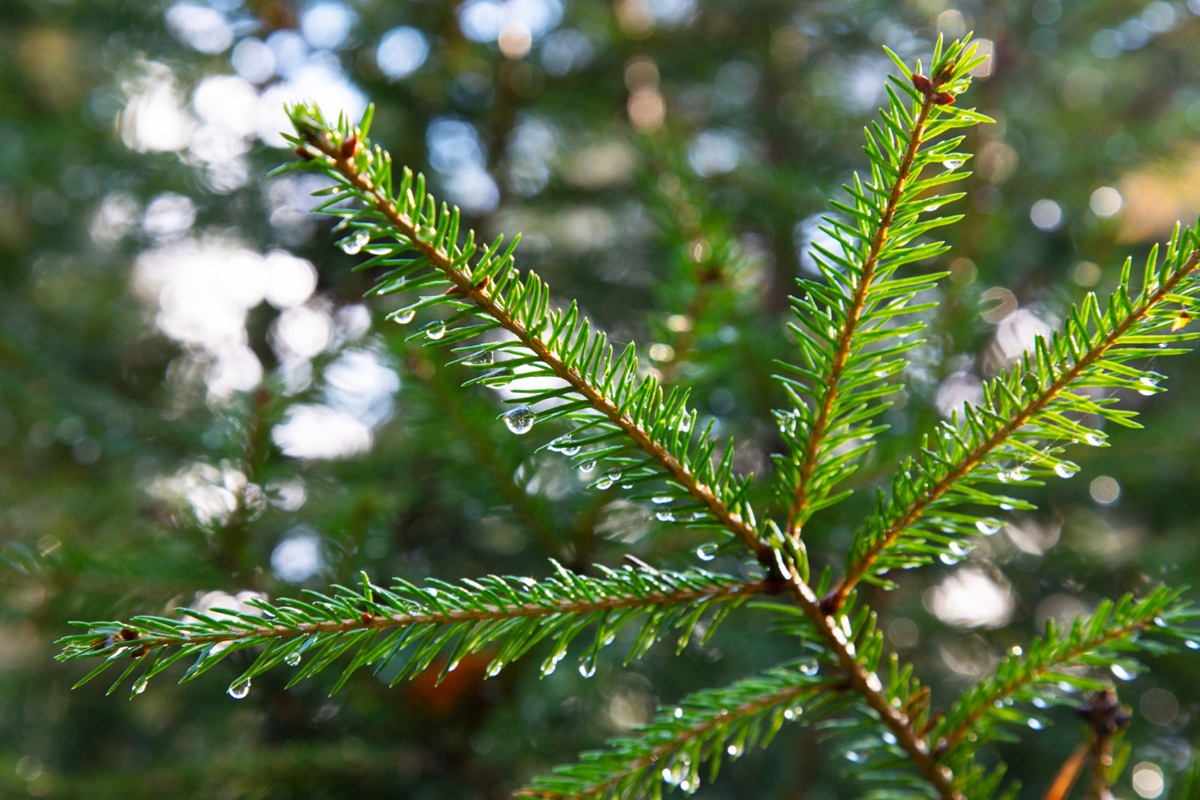Would you like to have a flawless garden all year round without spending your time trimming, watering, or pampering your plants? Good news: there’s a perfect solution for gardeners who want to enjoy their garden without too much effort!
Meet microbiota decussata, a little-known conifer that will quickly become your number one gardening ally thanks to its numerous qualities, starting with its almost nonexistent maintenance needs.
Microbiota Decussata: Do You Know This Conifer From Siberia?
Commonly referred to as Siberian cypress or creeping fir, its proper name is microbiota decussata. This unique species belongs to the same family as cypress and thuja, the Cupressaceae.
You may never have seen it? That’s normal! This small conifer was long reserved for botanical gardens before appearing in our private gardens starting in the 1920s. With its sprawling, creeping habit, it naturally forms a beautiful, dense green cushion, typically growing only 30 to 50 centimeters high and can spread up to two meters wide.
Its evergreen foliage features a lovely bronze-copper hue in winter, very decorative. Another plus: its slow growth (10 cm/year) means you won’t have to worry about pruning it much.
Why Is Microbiota Ideal for Your Garden?
Exceptional Resistance to Cold and Drought
Originating from the Siberian mountains, this conifer easily withstands glacial winters down to -40°C. Do you live in a region with harsh winters?
It stays perfectly green despite repeated freezes. Once well established, it is even resistant to moderate droughts, thanks to its robust root system.
Minimal Maintenance Required
Are you a beginner gardener or simply overwhelmed? This plant truly requires little attention. After the initial years, watering becomes unnecessary, except during prolonged dry spells.
Here are the few simple tasks to remember:
- Water regularly for the first two years
- No regular pruning needed
- No fertilizer needed, even in poor soil
- Very good natural resistance to diseases
Unlike other conifers like cypress or thuja, there’s no need for regular trimming here: the microbiota naturally develops a lovely harmonious shape.
Versatile for Various Soil Types
Think your soil isn’t ideal for a conifer? Microbiota adapts effortlessly to different types of terrain. It thrives in a wide range of conditions, such as:
- Calcareous soils (often problematic for conventional conifers)
- Stony or rocky terrains
- Well-drained sandy or clay soils
It will quickly become your miracle solution for areas of the garden where other plants stubbornly refuse to grow.
How to Easily Integrate Microbiota Into Your Garden?
Aesthetic and Highly Effective Ground Cover
With its rapid horizontal spread, this conifer makes an excellent ground cover, capable of greening bare areas while naturally limiting weeds.
Some ways to use it include:
- At the base of bare trees
- To stabilize steep or rocky slopes
- Replacing unhealthy grass in shaded areas
- Under the mass of other tall shrubs
The Star in Rock Gardens
To give your stone garden an authentic alpine touch, consider integrating microbiota. With its soft, spreading branches, it adds a very natural mountain aspect.
Feel free to pair it with alpine plants, ornamental grasses like carex, or perennials such as saxifrages or aubrietas.
A Natural Alternative to Boxwood
Looking for a solution to replace boxwoods that are susceptible to diseases? Great idea: microbiota can easily take their place and provide harmonious masses all year round.
Installation and Advice to Keep Your Microbiota in Top Shape
What Time to Choose for Planting?
Microbiota prefers to be planted between September-November or March-May. Avoid very cold or hot periods:
- Prepare a hole twice as wide as the root ball
- Lightly amend the soil with well-matured compost
- Place the plant at the same level as it was in the pot
- After planting, gently pack down and water generously
- Apply mulch to retain moisture and coolness
Maintain a spacing of about 80 cm to 1 meter between each plant to optimize its role as ground cover.
The Perfect Exposure for Your Microbiota
This dwarf conifer adapts to various exposures, although a position in partial shade suits it ideally.
When planted in light shade, it grows just a little slower while maintaining its density. In full sunlight, ensure the soil stays cool to see its beautiful bronze hue appear in winter.
Interesting Varieties to Discover:
Among the few existing cultivars, you can choose:
- Microbiota ‘Jacobsen’, ideal for rock gardens due to its very compact shape.
- Microbiota ‘Fuzzball’, appreciated for its particularly dense foliage.
- Microbiota ‘Celtic Pride’, perfect for wet regions in winter.
- Microbiota ‘Siberian Carpet’, remarkable for its very intense bronze color in winter.
Why Choose Microbiota Over Other Creeping Conifers?
Compared to junipers or savins, which are often spiky and require more light, this conifer stands out:
- Soft foliage, pleasant to the touch
- Better tolerance to shade and extreme cold
- Non-aggressive root system towards neighbors
- Completely free of fruits or berries
Microbiota Decussata stands out as an excellent choice for creating an aesthetic, sustainable garden that requires minimal maintenance!
Has your garden already adopted microbiota? Would you like to share your experience or need additional advice? Please feel free to leave a comment below; we’re interested in your thoughts! So, are you ready to give it a try? We look forward to hearing from you!
I’m a disabled, xennial Christ-follower, slightly off kilter (but aren’t all “ar-teeests”?).
Hope you enjoy my rantings, don’t take my sarcasm too seriously and know that comments are welcome. 🙂


Leave a Reply